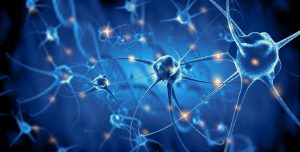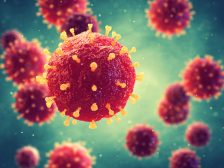
Biogenesis
n., [baɪəʊˈdʒɛnɪsɪs]
Definition: The theory or the process wherein a living thing comes from another living thing
Table of Contents
Biogenesis Definition
Biogenesis refers to the idea or the process whereby a living thing comes from another living thing, particularly of the same type. Biogenesis was not widely accepted before.
What was widely popular was the theory of spontaneous generation, which presupposes that life could come from inanimate objects or non-living things. People used to believe that maggots could emerge from rotting meat spontaneously — that a living organism as complex as mice could be produced from nonliving matter.
Etymology: Ancient Greek βῐ́ος (bíos, meaning”life”), Ancient Greek γένεσις (génesis, meaning”origin, source”).
Variant: Theory of biogenesis
Synonym: biogeny
Compare: spontaneous generation
See also: abiogenesis
Concepts
The notion that used to be popular was the spontaneous generation. People, including prominent scientific thinkers, such as Aristotle, believed that mice could arise from stored grain and in the absence of any biological parent. Aristotle wrote in his book, History of Animals, that some animals could spring from their parent animals and others could grow spontaneously and not from their same type. Accordingly, the animal could come from putrefying earth or vegetable matter.1
The principle of spontaneous generation states that inanimate objects could produce living things. This is sometimes referred to as abiogenesis. This theory is no longer widely supported to this day. With the advent of laboratory tools and microbial techniques, scientific experiments such as that of Louis Pasteur proved that living things could not be generated spontaneously from an inanimate object. Only living things are capable of reproducing another life. Thus, the notion of spontaneous generation became obsolete and the theory of biogenesis became more widely accepted.
The obsolete abiogenesis should not be confused with the modern context of abiogenesis. Abiogenesis is the idea (or the process) wherein the earliest life forms came about from non-living matter, such as organic compounds. These primitive life entities were not as elaborate as the living things we know today. They are less elaborate in form, structure, and function.
The emergence of living from non-living entities occurred gradually and slowly and it took them millions of years. As living things continue to diversify, they eventually became more elaborate in terms of physical and genetic attributes. Thus, while the modern context of abiogenesis implicates millions of years to occur, spontaneous generation depicted a process that involves a relatively shorter span of time (e.g. minutes, hours, days, or years).
Biogenesis refers to the process wherein life arises from similar life forms. The principle of biogenesis is opposite to that of spontaneous generation. The person who first came up with the term biogenesis was Henry Charlton Bastian 1837–1915. He proposed to use the term biogenesis in place of spontaneous generation.
Later, Thomas Henry Huxley 1825–1895 proposed that the term abiogenesis be used to pertain to the process of spontaneous generation and the term biogenesis be used for the process where life arises from similar life. These definitions prevailed. Biogenesis, thus, is the opposite of spontaneous generation. It asserts that living things can only be produced by another living thing, and not by a non-living thing.
Another important concept to take note of is the univocal generation, which pertains to the process by which an offspring comes from parents of the same species. This is in contrast to equivocal generation, which pertains to the process where a species is produced from an unrelated species, not necessarily involving sexual reproduction. For instance, a tapeworm was once believed to have been produced by its host.
Watch this video about Biogenesis and Spontaneous Generation
Reproduction
It is now a common notion that any living thing can only come from another living thing, and no cellular life has ever been observed to arise from non-living matter within a short span of time. Furthermore, it is now known that there are two major forms of reproduction: sexual reproduction and asexual reproduction.
Sexual Reproduction
From single-celled, certain organisms evolved into multicellular forms. Multicellularity provided the advantage of having a longer lifespan and becoming better adapted to different environments. With multiple cells, roles can be distributed among them. As such, different cells can perform different functions.
Over time, higher forms of multicellular organisms, such as humans and other vertebrates, emerged with a body comprised of two major types of cells: sex cells and somatic cells.
The sex cells are the cells involved in the production of gametes and in sexual reproduction. The rest of the cells of the body are called somatic cells. Male and female gametes are the sperm cells and the egg cells, respectively. Multicellular organisms reproduce sexually by copulation which leads to the union of male and female gametes. Some organisms such as certain plants and invertebrates are hermaphrodites (monoecious).
They bear both male and female gonads, and therefore both male and female sex cells are produced in a single body. Organisms that have only one gonad are described as dioecious. In animals, sexual reproduction often starts with finding a mate. Thus, courtship behavior in the animal kingdom is common and diverse. Natural selection is at play since the organism has to exert an effort (sometimes, extreme) to secure a mate for sexual reproduction.
Asexual reproduction
Asexual reproduction is another means by which organisms reproduce. It does not involve gametes (sex cells) just as they are the key players in sexual reproduction. There are many ways to carry out asexual reproduction: binary fission, budding, vegetative propagation, spore formation, fragmentation, parthenogenesis, apomixis, and nucellar embryony.
Prokaryotes reproduce mainly by asexual reproduction. Some eukaryotes, such as certain plants and parthenogenic animals, reproduce asexually. In asexual reproduction, there is no need to find a mate. The parent can reproduce an offspring in the absence of a mate and therefore create a clone.
Heterogamy
Some species are capable of heterogamy, i.e. the ability to alternate between sexual and asexual reproduction.
History
People once believed that a living thing could arise from an inanimate object or a non-living thing. This was the founding principle of the theory of spontaneous generation. One of the well-known proponents of this theory was Aristotle.1
This theory was later challenged. The first person to refute the theory was Francesco Redi 1626–1697. He demonstrated that maggots did not emerge from rotting meat but from the eggs of flies. Pier Antonio Micheli 1679–1737 also contested the then-popular notion. Based on his findings, the fungal spores he placed on melon produced the same type of fungi. This convinced him that the fungi did not arise from spontaneous generation. In spite of this, the theory remained to get wide support until the 1859 experiment by Louis Pasteur.
Louis Pasteur 1822–1895 known for his important scientific works in vaccination, microbial fermentation, and pasteurization, put an end to it through his experiment in 1859. He demonstrated that nothing developed from sterilized and sealed flasks. Microorganisms did grow on open, sterilized flasks.
He also used swan-neck flasks with fermentable broth. The structure of the flask allowed the air to enter while the dust particles were made to stick to the long curving tube and therefore were prevented from reaching the broth. Despite the air entering the flask, nothing grew on the broth.
Conversely, microorganisms grew on the broth when the flask was tilted sideways. This caused the broth to touch the tube wall contaminated with dust. This disproved the notion that microorganisms could spontaneously form from the air. Instead, the microorganisms in the dust caused the spoilage of the broth. Through his experiments, supporters of the spontaneous generation waned.
With the continued advancement of laboratory tools and techniques, spontaneous generation has been kept strongly disproved. At present, the principles of spontaneous generation became obsolete and the theory of biogenesis became widely accepted.
Answer the quiz below to check what you have learned so far about biogenesis.
Reference
- Aristotle. (1910) c. 343 BCE. “Book V”. History of Animals. Translated by D’Arcy Wentworth Thompson. Oxford: Clarendon Press. ISBN 90-6186-973-0. Retrieved from Link
© Biology Online. Content provided and moderated by Biology Online Editors








